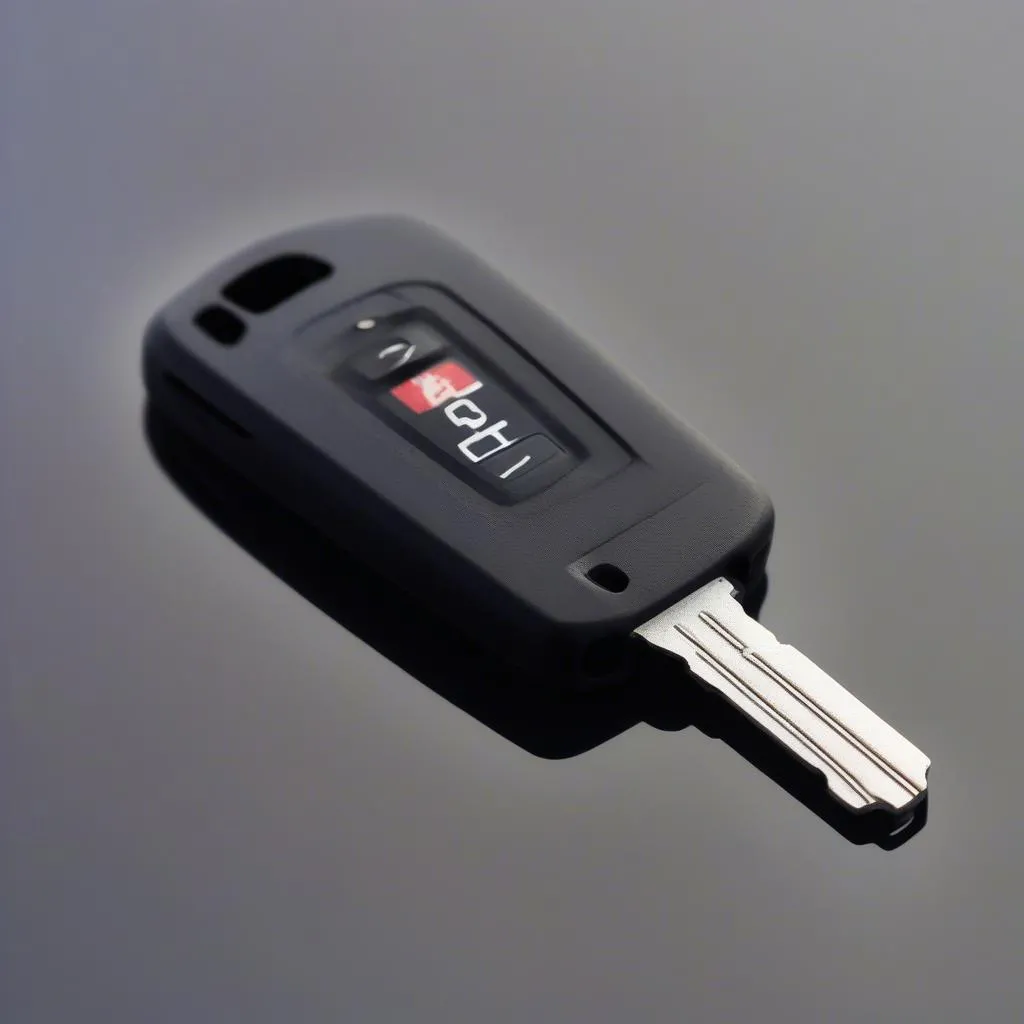You’re driving along, and suddenly, you see it – the dreaded seat belt warning light. Whether it’s a persistent chime or a glowing icon on your dashboard, this warning can be annoying and concerning. But before you panic, understanding the reason behind this warning and knowing how to address it can save you from unnecessary headaches (and potential fines!).
This comprehensive guide delves into the common causes of seat belt warnings in modern vehicles and provides expert insights on how to troubleshoot and resolve them.
Deciphering the Seat Belt Warning
The seat belt warning system is a crucial safety feature in your vehicle, designed to remind you and your passengers to buckle up. This system typically comprises sensors, a warning light, and an audible alarm. When a seat is occupied but the belt isn’t fastened, the sensor sends a signal, triggering the warning light and chime.
 Dashboard with seat belt warning light illuminated
Dashboard with seat belt warning light illuminated
Common Causes of Seat Belt Warnings
While the system’s purpose is simple, several factors can trigger a seat belt warning:
- Unbuckled Seat Belt: This is the most obvious reason. Always ensure all passengers have fastened their seat belts before driving.
- Faulty Seat Belt Buckle: Over time, the buckle mechanism can wear out or accumulate debris, preventing the seat belt from latching correctly.
- Damaged Seat Belt Sensor: The sensor in the seat belt system can malfunction due to wear and tear, a short circuit, or water damage.
- Software Glitch: Modern vehicles rely heavily on software. A temporary glitch in the seat belt system software can trigger a false warning.
- Weight on the Passenger Seat: Placing heavy objects on the passenger seat can sometimes trigger the sensor, even if no one is sitting there.
Troubleshooting Seat Belt Warnings
Now that you understand the potential culprits, let’s explore how to troubleshoot and fix these issues:
1. Check the Obvious: Begin by ensuring all passengers are buckled up correctly. Sometimes, a twisted or improperly latched seat belt can trigger the warning.
2. Inspect the Buckle: Examine the seat belt buckle for any visible damage, debris, or obstructions. Try cleaning the buckle with compressed air to remove any dust or dirt.
3. Check for Loose Connections: If you’re comfortable with basic car maintenance, carefully inspect the wiring connections to the seat belt buckle and sensor. Look for any loose or damaged wires.
4. Reset the System: Sometimes, a simple reset can resolve software glitches. Disconnect the vehicle’s battery for a few minutes and then reconnect it. This process can vary depending on your car model, so consult your owner’s manual for specific instructions.
5. Consult a Professional: If the warning persists after these steps, it’s best to seek help from a qualified auto electrician or mechanic. They can diagnose the issue accurately and perform any necessary repairs or replacements.
Preventative Measures
Preventing seat belt warnings goes beyond just buckling up. Here are some proactive steps:
- Regular Cleaning: Periodically clean the seat belt buckles and sensors with a vacuum cleaner and compressed air to remove dust and debris.
- Careful Handling: Avoid yanking or twisting the seat belt excessively, as this can damage the buckle mechanism.
- Routine Inspections: During regular vehicle maintenance, ask your mechanic to check the seat belt system for any signs of wear and tear.
Remote Diagnostics and Software Solutions
In an era of technological advancements, remote diagnostics and software solutions have become increasingly popular for addressing car issues.
got warning for seat belt ticket can often be resolved through remote diagnostics. This involves connecting your vehicle to a diagnostic tool that allows a technician to access the car’s computer system remotely. They can then analyze the error codes, pinpoint the problem’s root cause, and even perform software updates or resets if necessary.
Addressing a Persistent Seat Belt Warning Light
A persistent seat belt yellow warning light can be more than just an annoyance. It usually indicates an underlying issue with the seat belt system that requires attention. Ignoring this warning could compromise your safety in a collision.
“Many car owners underestimate the complexity of modern seat belt systems,” says automotive electrician John Miller. “They’re not just simple buckles anymore. These systems integrate sensors, airbags, and sophisticated software. Addressing a persistent warning promptly ensures your safety and prevents potentially costlier repairs down the line.”
Conclusion
The seat belt warning system is a vital safety feature in your vehicle, and understanding why it’s activated is crucial. By following the troubleshooting steps outlined in this guide, you can often resolve simple issues yourself. However, always remember that seeking professional help is essential for persistent or complex problems.
Remember, buckling up takes just a few seconds and significantly increases your chances of surviving an accident. Stay safe on the road!
Frequently Asked Questions
1. Can I disable the seat belt warning chime?
While technically possible in some vehicles, it is highly discouraged. Disabling this safety feature puts you and your passengers at risk.
2. How much does it cost to fix a broken seat belt buckle?
The cost can vary depending on your car make and model and whether you need a replacement buckle or just a repair. On average, expect to pay between $50 to $200.
3. My airbag light is on along with the seat belt warning. Are they related?
Yes, the two systems are often interconnected. A fault in the seat belt system could potentially disable the airbags or cause them to deploy improperly.
4. Can I drive with a faulty seat belt sensor?
While your car may still be drivable, driving with a faulty sensor is not recommended. It can affect the deployment of your airbags during an accident.
5. How often should I have my seat belt system inspected?
It’s good practice to have your seat belt system checked by a mechanic during your regular vehicle maintenance or at least once a year.

